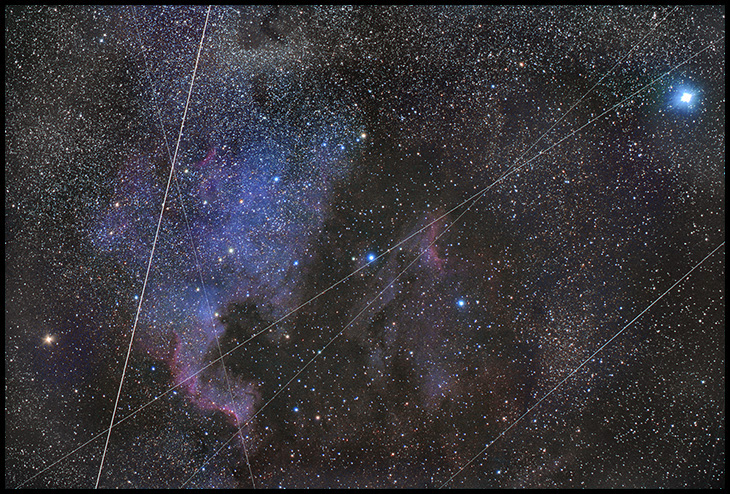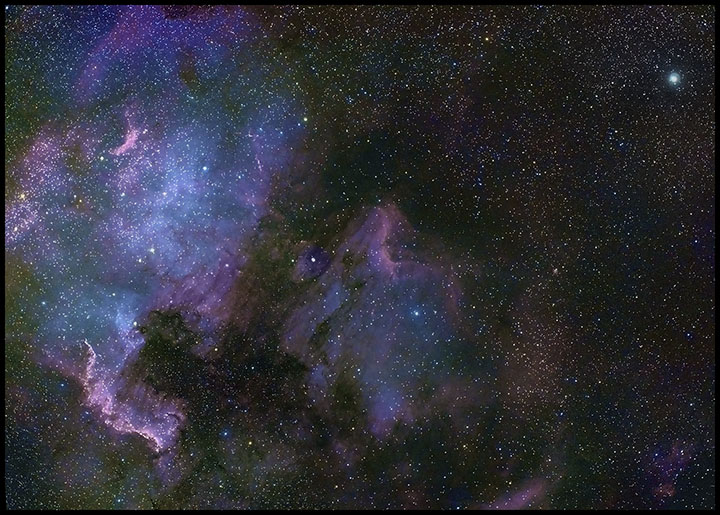Scribbling on the Vault of Heaven
10/21/2016. That's what I used to call satellite trails when they cut through some hour-long, meticulously guided exposure on film. When satellites happen into the subframes of a stack of images comprising a similarly long digital exposure, I am prepared to speak less critically of them because they are far less intrusive. I can discard individual subframes or integrate the subs using a pixel rejection algorithm to throw out any value differing by more than, say, 3 sigma from the mean. Either method scrubs the heavens clean. If you start deepsky imaging early in the evening, as nautical twilight fades, you have to expect these visitors as various bits of hardware and detritus sail overhead in bright sunlight a few hundred miles up.
At the beginning of a 2.5 hour white-light run on NGC 7000 and environs, several satellites glided through the field. Instead of removing them, I decided to see what the photo would look like if I stacked its sub-exposures in such a way as to retain them all:

NGC 7000 & Guests
4x180s (12 minutes)
TMB92SS @ F4.4, Canon 6D @ ISO 1600
CLICK TO ENLARGE
The brightest of these is a spent rocket body that remained in space following the release of its payload, and two of the others are Russian satellites. I couldn't identify the faintest two. All were shot from near Rutherford College, NC, on October 21, 2016, between 8:14 and 9:06 PM EDT.
What I was really after was a good RGB photo to supply color information to add to my hydrogen-alpha portrait of this field. Something like this (the stars are a bit funky around the Gulf of Mexico, so this is officially still a work in progress). I've averaged 40 three-minute exposues and used Pixinsight's sigma rejection algorithms to remove transient signals such as those from passing satellites and airplanes.

NGC 7000 and environs
RGB: 40 x 180s Canon 6D @ ISO 1600 (2 hours)
Luminance: ~5 hours @ ISO 1600, Baader 7nm H-a, modified Canon 50D, 600s subs
All: TMB92SS @ F4.4
CLICK TO ENLARGE